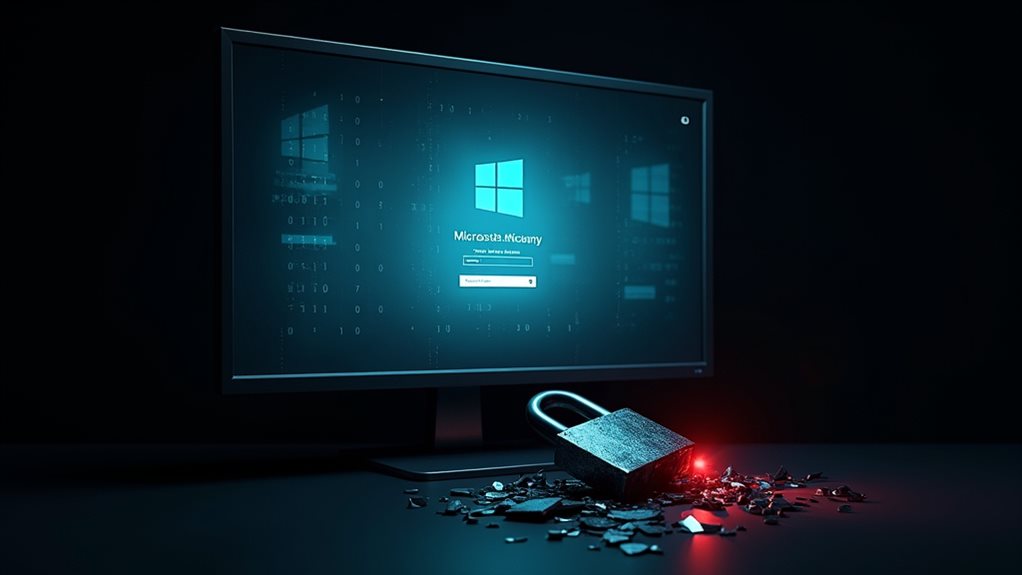How Hackers Are Outsmarting Microsoft Logins With Dangerous New Tactics

Hackers are outsmarting Microsoft logins with alarming sophistication. Through phishing campaigns that mimic genuine login interfaces, they exploit users’ confidence. They’ve got tricks like password spraying and stealthy URL shorteners to dodge security measures. A single compromised credential can fetch a fortune on the dark web. With techniques evolving faster than a binge-worthy series plot twist, vigilance is paramount. Curious about the clever tactics these cyber villains wield? The story unfolds with surprises ahead.

Hackers have perfected the art of breaching Microsoft logins, exploiting everything from software vulnerabilities to cleverly crafted phishing attacks. These incidents not only threaten individual users but also pose alarming risks to corporations relying on Microsoft’s infrastructure. Cybersecurity experts have noticed a worrying trend: the continuous evolution of these attacks showcases the relentless creativity of bad actors in an increasingly technological environment.
The relentless ingenuity of hackers threatens both individuals and corporations by breaching Microsoft logins through sophisticated methods.
One of the favourite playgrounds for these cybercriminals is Microsoft Exchange servers and Microsoft 365 administrator accounts. By targeting these critical elements, attackers can gain unauthorised access and compromise SMTP credentials. This breach allows them to send seemingly legitimate emails within organisations, making their schemes harder to detect. The exploitation of known software vulnerabilities paired with an organisation’s failure to patch them opens the door even wider, allowing malicious actors to sidestep filters designed to flag harmful content. (Exploiting Software Vulnerabilities) is a tactic that enables all sorts of malicious activity, from espionage to financial scams. Regular intrusion detection tools can help organizations identify and block these unauthorized access attempts.
In a sense, ignorance can be bliss for a hacker—especially when compromised credentials fetch a handsome price in dark web marketplaces. With 16 billion passwords currently circulating in underground databases, hackers have an unprecedented arsenal at their disposal.
Yet, that’s just the tip of the iceberg. Envision this: cleverly designed phishing campaigns employ Microsoft-branded kits that replicate login pages so accurately that they could fool even seasoned IT professionals. These kits come armed with pre-made scripts, email templates, and designs that mirror Microsoft’s authentication interfaces.
As if that weren’t enough, attackers are now adept at hijacking two-factor authentication codes. For users, this might feel like an escalating game of cat-and-mouse, with hackers constantly refining their tactics.
The password spraying technique drives the point home further. Instead of bombarding a single account with multiple attempts, hackers test a list of common weak passwords over numerous accounts. Why? To bypass system defences designed to thwart login attempts. It speaks volumes about the ongoing issue of poor password hygiene in a world where many users still rely on easy-to-remember (but easily hacked) credentials. The effective use of breached email databases only adds to the scale of this attack vector.
Another underhanded tactic has emerged: link wrapping and multi-layered redirects. Here, attackers cleverly manipulate legitimate URL shorteners to cloak malicious links, rendering them invisible to the unsuspecting eye. These wrapped links often evade URL scanners at the moment of click, allowing the infection to occur before any alerts can be triggered. The use of trusted link wrapping services amplifies the effectiveness of these phishing campaigns.
The sheer stealth of these methodologies is dazzling—if you aren’t paying attention.
Finally, device code phishing is grabbing headlines, allowing attackers to exploit time-limited tokens for lateral attacks, swooping into internal networks post-breach. Imagine receiving what looks like a normal, insidiously convincing document, only to discover it’s a baited trap.
As dangerous as they are clever, these tactics leave many to wonder: who’s really safe in this technological era?
Final Thoughts
As hackers continue to refine their tactics, even the seemingly secure Microsoft logins are becoming vulnerable. With the rise of sophisticated phishing schemes and credential stuffing, it’s essential for users to remain vigilant. Cyber experts emphasize the importance of strong, unique passwords and multifactor authentication as critical defenses against these threats. Zoo Computer Repairs is here to assist you in implementing these proactive cybersecurity measures to protect your digital assets. Don’t wait until it’s too late—click on our contact us page to get in touch and fortify your defenses today!
